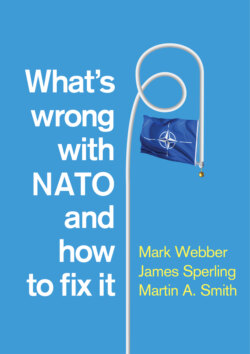Читать книгу What's Wrong with NATO and How to Fix it - Mark Webber - Страница 14
NATO is strategically aware
ОглавлениеSince the end of the Cold War, NATO has been engaged in an ongoing search for a compelling strategic vision. As we will see in Chapter 5, it has not found that task easy. But here two points can be made by way of mitigation. The first relates to the complexity of the security environment that NATO has had to deal with. Comparison with Cold War NATO may be unflattering but it is also unfair. Faced with the singular, overarching threat of Soviet power, strategy came relatively easy. Since the Soviet Union’s demise, the security challenges facing the Alliance have been multiple in number, form and direction. NATO, consequently, cannot mobilize toward a single set of objectives (deterrence, defence and dialogue, as in the Cold War) focused on a clearly identified foe. Rather, it has had to shift focus according to the most pressing threat or issue at any given time.
Responsiveness of this type is no bad thing if it is consciously considered. Indeed, a second point of mitigation is that NATO has purposively shifted its operational focus on several occasions. On this basis, it has been able to claim that it is multi-purpose. In the words of the 2010 Strategic Concept, the Alliance seeks to fulfil the three ‘essential core tasks’ of collective defence, crisis management and cooperative security. As one seasoned NATO official has acknowledged, pursuing all three tasks simultaneously is extraordinarily testing.27 The Alliance, in this sense, is a victim not of inaction but of ambition.
